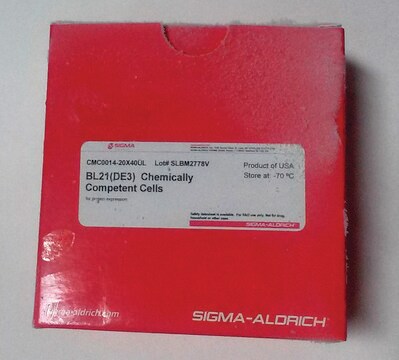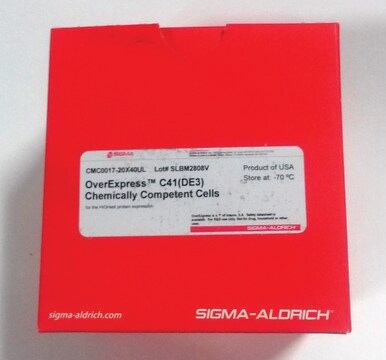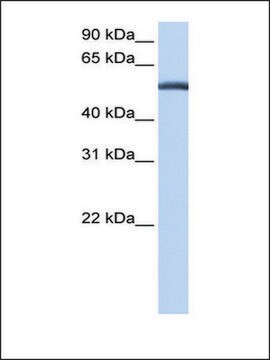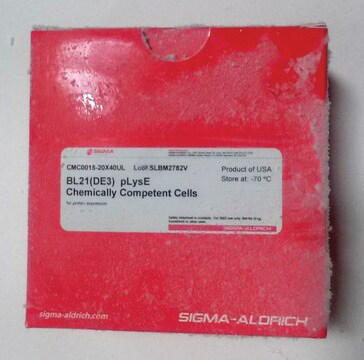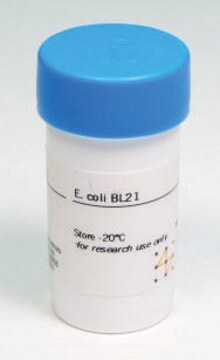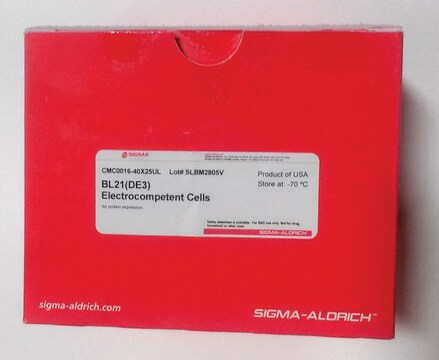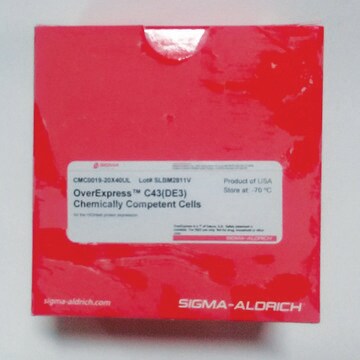CMC0014
BL21(DE3) Chemically Competent Cells
Escherichia coli, rod shaped
Synonyme(s) :
Competent E. coli cells
About This Item
Produits recommandés
product name
BL21(DE3) Chemically Competent Cells, for protein expression
Source biologique
Escherichia coli
Qualité
for molecular biology
Mode de croissance
adherent or suspension
Morphologie
rod shaped
Technique(s)
microbiological culture: suitable
Transformation cellulaire
competent cell type: chemically competent
transformation efficiency: ≥1 x 107 cfu/μg
Conditions d'expédition
dry ice
Température de stockage
−70°C
Description générale
Genotype
F – ompT hsdSB (rB- mB-) gal dcm (DE3)
Application
- to express tau 2N4R isoform (aa1–441) and the truncated tau (aa1–421) using pET19b as expression vector.
- BL21(DE3)Chemically Competent Cells has been used for the transformation and expressionof protegrin-1 (PG1) peptides.
- to express 6His-TEVsite-Hs ARF1 (17-181)-Q71L in pHis2 vector.
Caractéristiques et avantages
- a transformation efficiency of >1 × 107 cfu/μg.
- economical prices
- offering superior value for everyday protein expression work.
Composants
- BL21(DE3) chemically competent cells
- pUC 19 transformation control DNA
- recovery medium for expression
Code de la classe de stockage
10 - Combustible liquids
Certificats d'analyse (COA)
Recherchez un Certificats d'analyse (COA) en saisissant le numéro de lot du produit. Les numéros de lot figurent sur l'étiquette du produit après les mots "Lot" ou "Batch".
Déjà en possession de ce produit ?
Retrouvez la documentation relative aux produits que vous avez récemment achetés dans la Bibliothèque de documents.
Les clients ont également consulté
Notre équipe de scientifiques dispose d'une expérience dans tous les secteurs de la recherche, notamment en sciences de la vie, science des matériaux, synthèse chimique, chromatographie, analyse et dans de nombreux autres domaines..
Contacter notre Service technique
